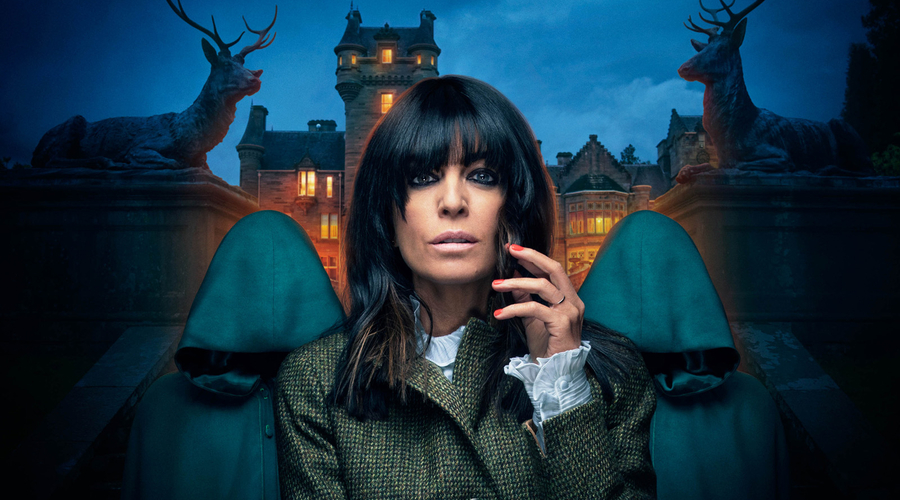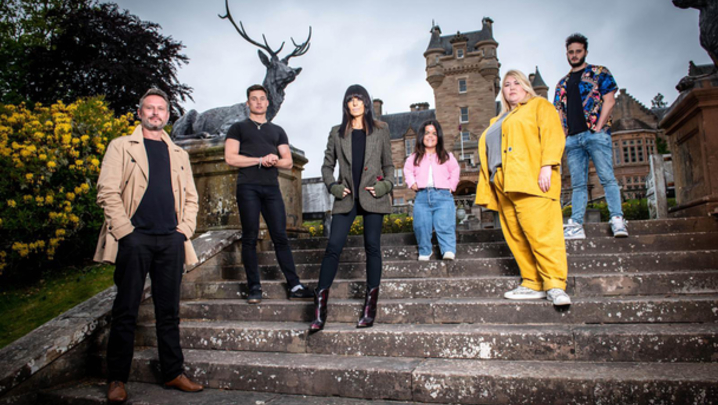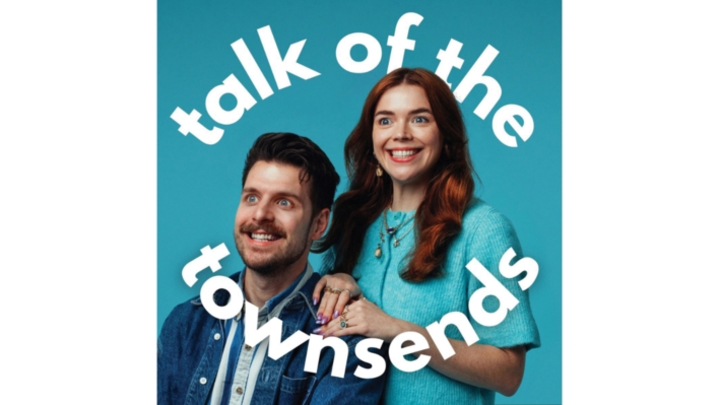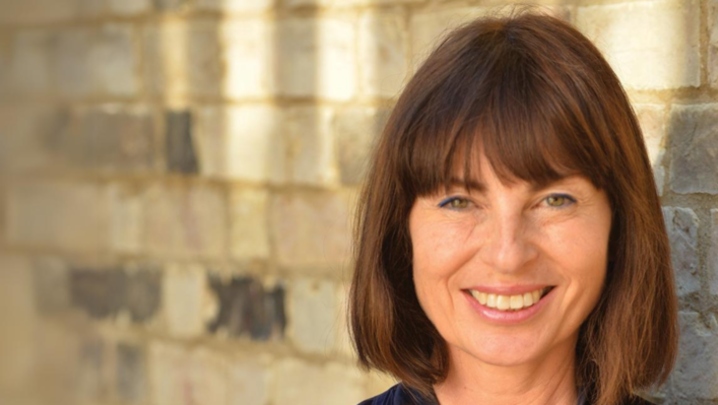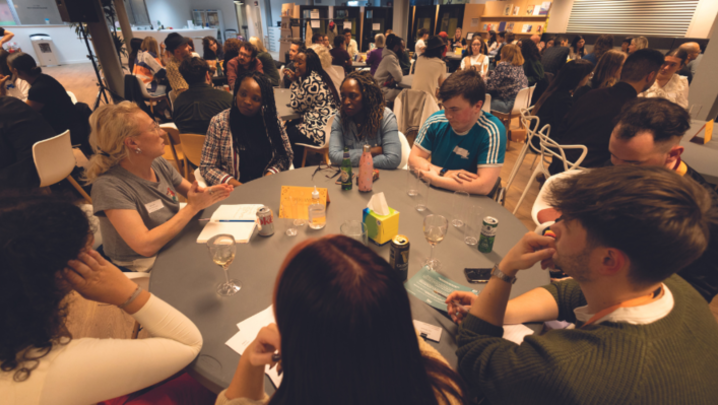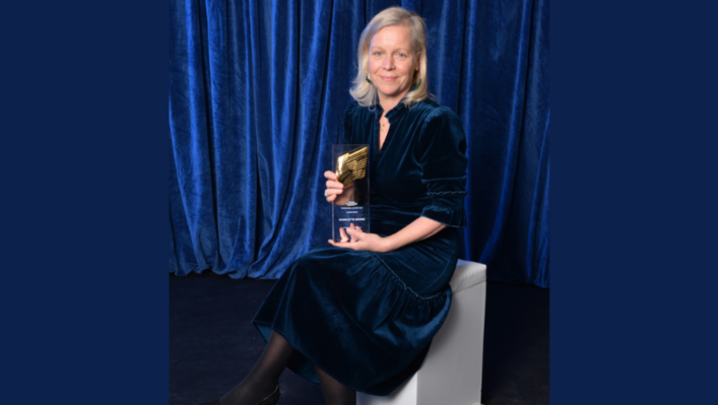The RTS hears how The Traitors has become a huge hit for the BBC
It all seems so obvious now. Put 22 ordinary people in a spooky Scottish castle, divide them into Traitors – whose job it is to murder the others – and Faithfuls, whose job it is to work out who the Traitors are and banish them. It’s Wink Murder on steroids. Put the effervescent Claudia Winkleman at the helm, and let the viewers come.
And they did. To date, the show has received 34 million views on iPlayer, making it the biggest new series of all BBC content for younger audiences. Two RTS and two Bafta awards have followed, in each case rewarding the show itself and Winkleman’s performance. A second series is already in production.
Mike Cotton, executive producer of the show for Studio Lambert, told an RTS event in mid-June how the format, already successful in the Netherlands, came the company’s way. It arrived via the international arm of Studio Lambert’s owner, All3Media, and, from the start, hooked Cotton and his colleagues.
“It’s totally different to what we’ve seen on TV recently,” he said. “There’s been a glut of dating shows, entertainment shows, talent shows, but this spoke to trust, deception and human nature.”
Simultaneously, the BBC, which “hadn’t had a big reality show for several decades”, according to Neil McCallum, its Commissioning Editor for Daytime and Entertainment, was seeking such an idea, and was already in talks with NBC.
When Studio Lambert appeared with its idea for a UK Traitors, the stars aligned in all sorts of ways: the commissioning of a US version offered the producers more money to spend; the BBC had a commissioning editor based in Glasgow; and even the timing, which meant the NBC version went into production just before the British one.
Asked who was easier to work with, NBC or the BBC, Cotton’s fellow executive producer Sarah Fay was suitably diplomatic: “They’re both wonderful in their different ways.”
What were the different elements that contributed to such a massive hit? For a start, the cast – “We don’t call them contestants, they’re playing a game, so they’re players,” explained Cotton.
Whereas the original Dutch version of The Traitors had been filled with celebrities and the NBC version a mix of celebs and non-celebs, the BBC show became the first to feature only ordinary people. And what a cast it was: 22 people varying in age, background and disability, but all rich in personality.
McCallum reflected: “As tempting as it is to have the poster full of well-known celebs – and that can bring viewers to a show – we realised that people are more likely to throw themselves into it if they don’t have a [known] image. It was a rare opportunity to cast 50 years of life experience in 22 different personalities. It’s not a Love Island cast.”
Welsh estate agent Amanda Lovett, whose chatty, instantly confiding audition reel showed immediately the qualities the producers wanted for the show, explained that she had spotted an ad on social media and liked the fact it was “open to us oldies as well”. And she revealed: “After I’d had a few gins, I thought, that sounds all right, I’ll apply for that and hope for the best.”
Her fellow Traitor Wilf Webster remembered spotting a similar ad, “This is something I think I can play. It was adventure, a psychological gameshow. I thought it would be a lot easier than it was.”
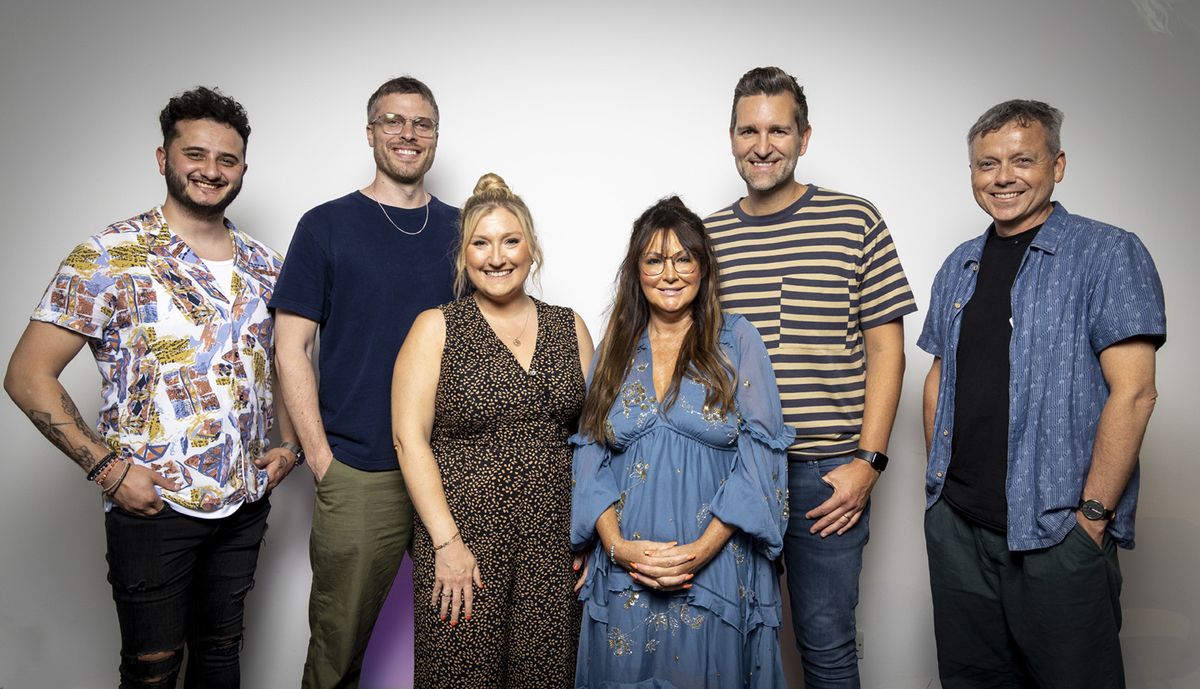
As viewers will know, both Lovett and Webster became Traitors, their selection made by producers, but also by Winkleman, who became fully committed to the game the day she signed up. At the team’s first meeting, she told producers she’d been up until 4.00am the previous morning watching the Dutch version.
Winkleman’s contribution, all agreed, was key to the show’s success. Fay recalled: “We wanted Claudia to feel like the lady of the manor, part of the castle and part of the drama. We knew she’d bring the warmth and wittiness, but we also wanted some brutality – she struggled with that initially.”
Lovett revealed that Winkleman had become so invested in the players’ fortunes that she sent each of them a letter to be opened when they got home: “She didn’t have to do that. So lovely.”
Viewers will remember Winkleman yelling from the sidelines as the Traitors and Faithfuls teamed up for a series of spookily themed missions to build up the prize money. These missions were separate from the central mystery-game, something Cotton said was deliberate: “The missions are the one time when the Traitors and Faithfuls come together to build the prize money. It’s a break from the central game. It’s not so intense. Then they have to go back to the castle and start banishing and murdering each other again. That underpins the missions.”
When Studio Lambert visited the Dutch show, producers there instilled in them the mantra, “It’s not a reality show, it’s a game.” That helped the British team keep a firm but light touch on proceedings once filming started.
“You set up the rules and then you let them go. It was terrifying but also really exciting,” remembered Cotton. “Making the show, you can’t have producers constantly pulling people away, so how do you do it? We wanted to shoot every episode in a day, so it was a constant cycle.
“Within it, there were rituals: the same way of everyone arriving for breakfast; then, when it was time for the roundtables, we always played the same music; at night, when it was time for the players to retire, we played some loud bongs to symbolise that. It’s not like training puppies, but…”
Webster recounted the terror he felt every night when those bongs sounded throughout the castle. The producers acknowledged the setting contributed to something of a psychological pressure chamber for the cast, who all showed their emotions and stress levels on screen.
Fay discussed the duty of care to these individuals which came with that: “We didn’t shy away from knowing this was a psychological game, and we had a three-pronged approach.
“Pre-filming, we referred our contestants to psychologists, to check that anyone coming to the show was robust enough to deal with the game. That continued the whole time we were in Scotland, where we had our psychologists with us and who the contestants would see every other day, and we kept those members of staff consistent for each contestant to build trust.”
Post show, Cotton reflected: “We had no idea the show was going to be such a success, and the press that would come with it.” He said psychologists remained on hand for any contestants to refer to as each episode was shown.
McCallum reported, too, that, ahead of filming, each member of the cast was sent footage of the original Dutch version of the show, “just so they understood the grammar of what a round table was. Second time around, we’re filming now, and it’s very different.”
That’s right: even as the producers and commissioners continue to celebrate the ratings and awards that have come with this stunning debut, the wheels are already turning on season 2.
Cotton explained that the second series is a different beast to the first: “We’re in production now, we’ve started casting. They all come, thinking they know how to play it, so that will be interesting.
“The core game is so strong, we’re not going to change the format. But it’s a murder-mystery, so there will be twists and turns.” He paused, before adding, unsurprisingly, “What they are, we’re definitely not going to say.”
Report by Caroline Frost. ‘Anatomy of a hit: The Traitors’ was an RTS National Event held on 13 June at London’s Cavendish Conference Centre. The producers were Becky Cadman, Terry Marsh and Tom Popay.

